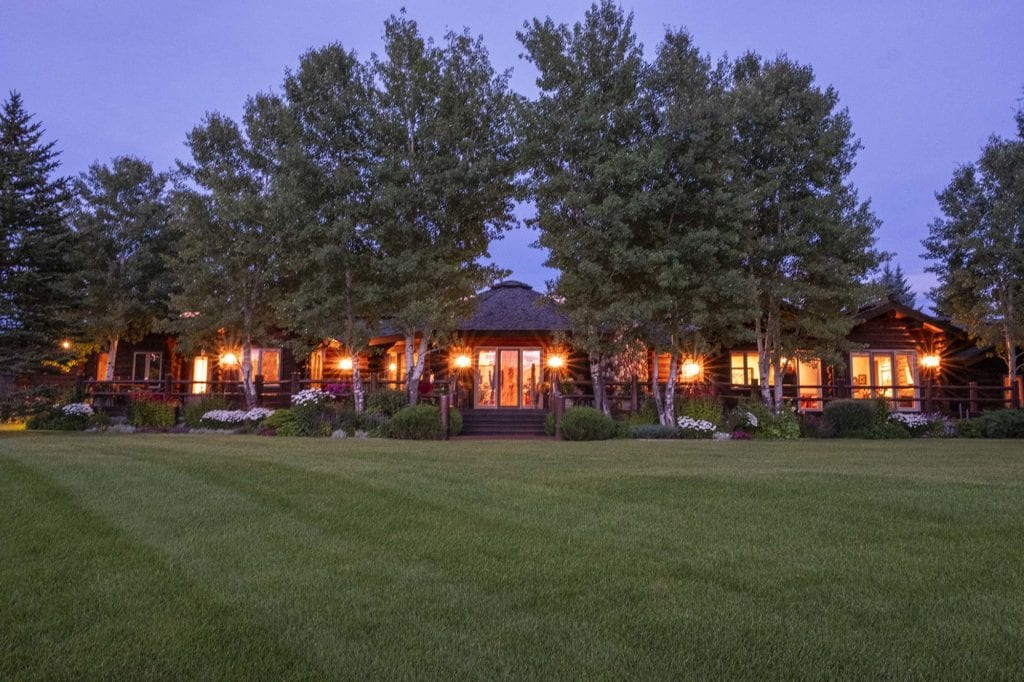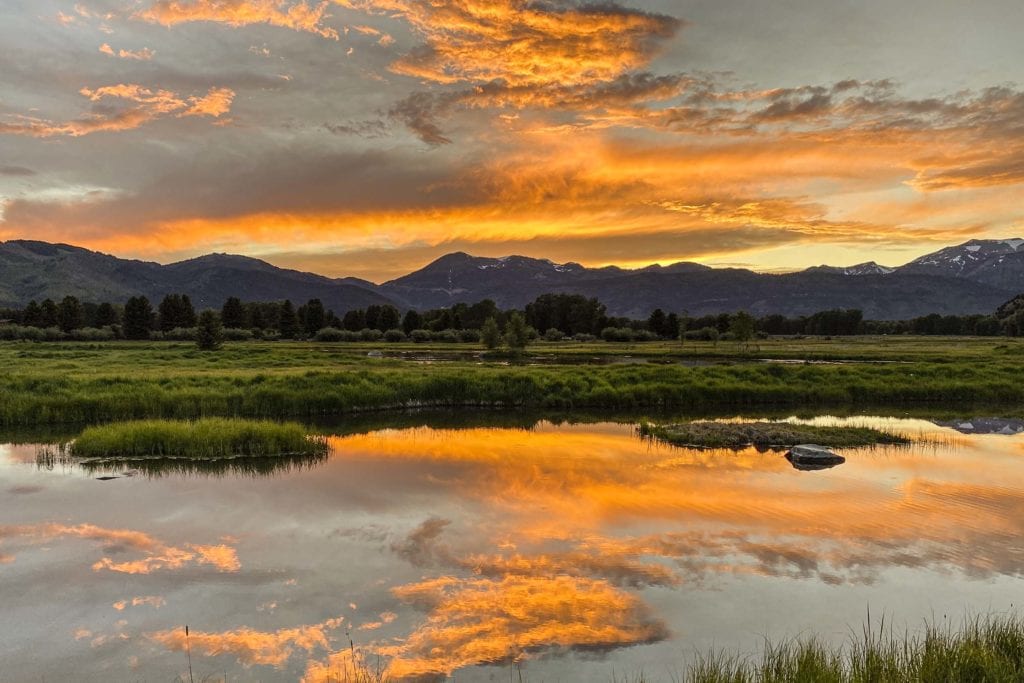Fly Fishing Ranches for Sale in the Rocky Mountain West
2021 has been such a curious year, not only for business, daily life, and travel, but also fishing! The West did not see the snowpack this year as it has in the past. Coupled with the extremely hot weather we have been seeing, runoff occurred and ended earlier than expected. Lower water flows and rising water temperatures have made this year’s hatch season come sooner than expected. Many of our Brokers are well-versed in fly fishing and have fished each of these properties themselves. This Hatch Report depicts their thoughts and experiences on Live Water’s prominent fly fishing ranches for sale.
Montana Fly Fishing Ranches for Sale
Harwood Ranch
Willow Creek, MT | 4,996 Acres
Willow Creek has been fishing excellent this year. Moving into the warmer summer months, early to mid-morning and late afternoon to dusk time slots are the most productive fishing periods. During the morning, look for fish in the deeper pools behind rocks, in the heavier riffle water and deeper bank runs. During the evening hours after the sun leaves the water, fish will be in the slack water, seams, and tailout portion of runs, aggressively feeding on mayfly duns and caddis adults. PMD’s are beginning to show up, and fish are also starting to look for terrestrials like ants, beetles and hoppers.
The fish in the creek are aggressive and receptive to a variety of fly patterns. Dry flies such as Royal Wulffs, Royal Trudes, Elk Hair Caddis, Purple Haze, Parachute Adams, and sulfur dun imitators are great choices. Any smaller, flashy beadhead nymph patterns fished with an indicator – Hares’s Ear, Pheasant Tail, Prince Nymph, Copper John – are always deadly in the creek as well. Oftentimes the best of both worlds is a foam pattern like the Chubby Chernobyl with a beadhead off the back, to fish both surface and subsurface simultaneously. Streamers, such as Wooly Buggers and smaller baitfish patterns, can produce a lot of fish and are especially productive on the brown trout.
Bitterroot Bend3
Hamilton, MT | 53 Acres
If you want to live on running water, there may be no better place. The Bitterroot Bend features a mile of the world-renowned Bitterroot river and spectacular lodging built right on the water. Renowned by angling circles, the Bitterroot River’s main draw is its prolific insect hatches, which produce steady dry fly fishing for wild Rainbows, Browns, and native Westslope Cutthroats nearly ten months out of the year. Currently, the Bitterroot is dropping out of June’s higher flows and the fish are settling into their summer lies. Hatches of caddis, PMD’s, Sallies, and golden stones should keep the fish looking up through the summer months. Easy wade fishing access to some of the river’s best runs, which are within eyesight of the Bend’s main lodge, and a private boat ramp allow excellent access to a section of river highly regarded by the guides who know the river best.
West Fork Madison River Homesteads
West Yellowstone, MT | 448 Acres
As the West Fork of the Madison River winds its way through these beautiful 448 acres, one will find a couple of different bug hatches and fish species. This stretch of river has a prolific hatch of caddis and mayflies, allowing for fun dry-fly action. This river consists of mainly rainbow trout with just a few browns. The average fish size is expected to be around 12-14 inches. Flies such as Royal Wulff, Parachute Adams, caddis, and mayfly patterns can get the job done here throughout most of the summer. As runoff occurs, fishing might be delayed until mid-June as the water starts to clear up.
Explore the West Fork of the Madison River Homesteads

Riverbend Angler
Fort Smith, MT | 40 acres
Riverbend Angler lies along one of Montana’s most famous rivers, the Bighorn. This river, in particular, is known for its quality of fish, where catching brown trout larger than 20 inches is not uncommon. Fishing in this area is best in June and July, where throwing subsurface nymphs such as sowbugs and scuds can be quite successful. This river is known for sight nymphing in shallow riffles, but dry fly fishing with PMDs and hoppers can produce fish throughout the summer. The flows on this river are best around 1750 CFS, which is held relatively consistent during the summer months.
Little Beaver Creek Ranch
Huson, MT | 1,089 Acres
Wyoming Fly Fishing Ranches for Sale
Snake River Sporting Club Ranch Estates – Lot 1
Jackson Hole, WY | 35 Acres
Bird Cloud Ranch and Rivers Edge Ranch
Bird Cloud Ranch | Saratoga, WY | 640 Acres
Rivers Edge Ranch | Saratoga, WY | 85 Acres
Bird Cloud and Rivers Edge offer quality fishing along Wyoming’s famous North Platte River. Because these ranches are located about a mile from each other, they have similar hatches and fishing. The North Platte River has a significant runoff season in late May and early June as the snow melts off in the Saratoga area. Fishing before runoff can be good, throwing streamers and nymphs for trophy brown, rainbow, and cutthroat trout. As it gets into the summer months, the fishing starts to heat up again with the usual summer bug hatches. Caddis, mayflies, Trico, and midge hatches can be seen throughout the summer and early fall. One can find weather-specific hatches such as Salmon flies, Golden Stones and Drakes shortly after runoff until the end of summer.
Colorado Fly Fishing Ranches for Sale
Reserve on the East River
Crested Butte, CO | 35 Acres
The Reserve on the East River has abundant bug life throughout the spring, summer and fall. Starting in the spring, midges and mayflies, such as PMDs and BWOs, kick off the dry fly season as the rising water temps allow for large morning and afternoon hatches. As the water temps rise more into the summer months, caddis and Stoneflies, such as Golden Stones and Yellow Sallies, join the hatch. Finally, the late summer and early fall months bring terrestrials such as hoppers, ants and beetles into the game. This area allows for fantastic dry fly and nymph fishing.
Explore the Reserve on the East River
Idaho Fly Fishing Ranches for Sale
River Point Ranch
River Point Ranch sits along the famous Henry’s Fork of the Snake River, one of the most sought-out fisheries in the United States. From this property, one will find excellent wade fishing for trophy brown and rainbow trout among one of the most prominent sections on the Henry’s Fork. This fishery is best in late May and early to mid-June. Because this river is a tailwater, runoff does not affect this stretch of river as much as the surrounding waterways, allowing better fishing earlier than most rivers. With that being said, water temperatures rise with the heat of summer, making this section unfishable from July to mid-August, however, the fishing picks back up as the colder weather starts to set in. The most notable hatches are Salmon Flies, Golden Stones, and Green Drakes. Fishermen from all over the country travel in hopes of hitting these hatches at the right time for quality dry fly action. Other hatches such as caddis, PMDs, midges, and Tricos are available throughout May and June and produce world-class dry fly fishing. The average fish size is larger than most rivers ranging from 14 to 16 inches, with plenty of trophy fish over 20 inches.
Teton Canyon Farms
Tetonia, ID | 860 Acres
Teton Canyon Farms has over one mile of river frontage on the Teton River. This property, in particular, has one of the most remote and best fishing stretches of river on the Teton. Wade fishing access is the main attraction, but there is an option to float to or from this property on a raft. Because runoff is significant in late May and early June, fishing is best around mid-June to the end of summer. As runoff slows, hatches of PMDs, caddis, and Yellow Sallies swarm the river, making dry fly fishing the main event throughout the summer. Later into the summer months, anglers can throw hoppers and larger foam flies to attract and catch these wild trout. This stretch of river offers the possibility of catching rainbow, brown, brook, and cutthroat trout in a diverse range of sizes.
Lower Teton River Ranch
Newdale, ID | 184 Acres
The Lower Teton River Ranch offers three-quarter miles of river access to the Teton River. This fishery can produce high-quality rainbow, brown, cutbow, and cutthroat trout fishing prior to spring runoff and throughout the summer months. Fishing is best post runoff in June and July, yet fall fishing can be quite productive as well. Hatches of Drakes, PMDs, caddis, Yellow Sallies, midges, Tricos, and hoppers will keep any avid fisherman happy throughout the fishing season. Along with wade fishing, this property offers boat access where one could float to or from the property.
Explore Lower Teton River Ranch
Oregon Fly Fishing Ranches for Sale
R&C Ranch
Fossil, OR | 5,430 Acres
The John Day River is well-known as one of the top smallmouth bass fisheries in the United States. Anglers in the know can hit triple-digit numbers of “fish to hand” in a single day. With increased temperatures in summer and with steelhead fishing still months away before their return, smallmouth appetites increase with abandon and readily attack anything in front of them. Fly anglers use both topwater and subsurface approaches to catch these fish. On the surface, tried and true Sneaky Pete’s, Dalberg Divers, and Boogle Bugs work exceptionally well. Terrestrial patterns such as Chernobyl Ant patterns and Damselfly patterns also work well along cut banks. When targeting the larger breeder smallies, go subsurface with Wooly Bugger-type patterns such as the Jawbreaker by Solitude Fly Co. in any color—tied like a wooly bugger, with a rubber tail and long rubber legs, giant smallmouth cannot resist. Also, crayfish patterns work well on this river too.



































































































